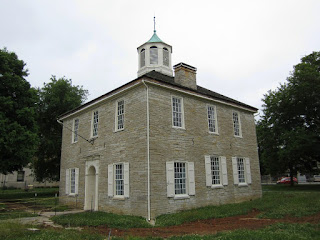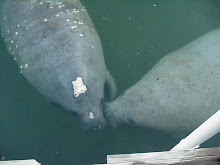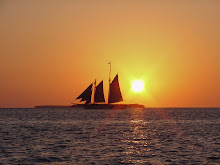Wednesday, July 29, 2015
Tuesday, July 28, 2015
Frontiersman(& woman) and Founding Father (& Mother)
As The Colonel and I continued our leisurely (and history filled) drive back to Florida, the first place we stopped in Kentucky was Frankfort, its capital. We had a specific place in Frankfort that we wanted to visit, the Frankfort Cemetery.
The Frankfort Cemetery was incorporated in 1844. Its 100 acres are on a bluff that overlooks the Kentucky River and the Capitol.
There are seventeen governors, some senators and several confederate soldiers buried in the cemetery but we were only interested in locating the final resting places of Daniel Boone, Rebecca Boone and Col. Isaac Trabue.
Most of us know that...Daniel Boone was a man, was a big man...and the rippinest, roarinest, fightinest man the frontier ever knew....
Daniel Boone (1734-1820) was a pioneer, explorer and woodsman. His major claims to fame were the blazing of the Wilderness Trail in the Cumberland Gap and the exploration and settlement of Kentucky. He married his wife, Rebecca (Bryan) Boone (1739-1813) in 1756.
They would have ten children. Their grandson, Enoch Boone would be the first white man born in Kentucky.
I had done some research to find out which section of the cemetery the Boone couple could be found (section G). The Colonel and I found the section and there was a sign pointing the way to the grave site (I thought the sign needed some work/updating. I think the N was a Z turned on its side).
We walked down the steps to the Boone monument. Our glee increased with each step as we got closer to the famous couple's final resting place.
The Boone monument was impressive and beautiful.
Daniel's name was on one side of the monument and Rebecca's on the other. There were four reliefs on the monument that depicted aspects of the Boones' lives.
Daniel and Rebecca did not die in Kentucky. In 1799, they moved to Missouri (at the time it was under Spanish rule) because Daniel lost his land claims in Kentucky for failing to register them properly. They were buried in Missouri when they died. In 1845, their bodies (what was left of them, only the larger, visible bones were moved) were disinterred and brought back to Kentucky and reburied at the Frankfort Cemetery. Missouri still claims that the Boone couple are buried in Missouri (or at least some remnants of their bodies are still in their original graves).
Our search for Col. Isaac Trabue's grave did not take long at all. Isaac's grave was very near the Boones' grave (it is speculated that the Trabue and Boone families are related). As a matter of fact when I took a picture of Isaac's grave I could see the Boone grave, as well as the Capitol, in the background.
Who is Col. Isaac Trabue you ask? He was the founder of the town I live in.
Col. Isaac Trabue was born in Kentucky (a true Kentucky Colonel) and served in the Union Army under Generals Anderson and Sherman. He owned coal mines and supplied coal to the Union transports on the Ohio and Mississippi Rivers. He owned a handful of slaves and put them into service for the Union Army as hospital nurses and working in the Quartermaster's department.
After the Civil War, the five-foot, red headed Col. Trabue became a lawyer and political leader in Kentucky. He was an avid lover of the game of chess and in 1883 he beat the world's best chess player, Johannes Zukerfort. Trabue also created a four-handed chess game and held competitions (held on the second Monday of December each year) while he lived in Florida. He designed the medal that was awarded to the winners. He and his wife, Virginia often played chess.
In 1885, the Trabues came to southwest Florida to settle on the 30 acres they had purchased two years earlier. This part of Florida was a wilderness when the Trabues moved here and was very sparsely inhabited. Col. Trabue eventually amassed about 380 acres on the south shore of the Peace River. Soon after their arrival, Col. Trabue realized he needed the railroad to help develop the town he envisioned....The town of TRABUE, Florida. He went to Boston and convinced the owners of the Florida Southern Railway to make his town of Trabue the country's southernmost terminus and build a grand resort hotel. In exchange, he deeded the railroad half of his real estate holdings. The first passenger train reached Trabue on August 1, 1886.
Col. Isaac Trabue named many of the streets of his town after members of his family. Those names still grace the street signs today. I often drive down Virginia Avenue each week.
In 1887, Col. Trabue "lost" his town of Trabue when a group of men met in December to incorporate the new town as Punta Gorda. It seems that Col. Trabue's red hair may have caused him to quarrel and litigate nearly everyone he did business with in town, which in turn, triggered the town's name change at its incorporation.
The Trabues continued to live in the little town after its name change.
In 1907, Col. Trabue became ill and wished to go back to Kentucky.
He died in Dawson Springs, Kentucky and is buried next to his father, in the Trabue family plot in Frankfort's cemetery.
The Trabue family was well-situated. Just seeing their family plot at the cemetery tells you so. The plot is large and fenced in. What was once a beautiful and grand grave site for Col. Trabue's ancestors now lies in a lovely ruin that inspires thoughts of Gothic novels.
I just had to know what the inside of this grave site looked like, so I put my camera lens up to one of the spaces in the filigree around the door.
The Colonel did a bit of genealogy on Col. Trabue's family when we got back home and he thinks that those buried in this in-ground mausoleum are Col. Trabue's grandparents.
I just loved the look and feel of this necropolis ruin. I can't tell you how many photos I took of it and how many different angles were involved. I would have loved to have seen it before it tumbled down.
At his death, Col. Isaac Trabue's estate was valued at $500,000. It consisted of Kentucky coal land (13,000 acres), Florida timber land (70,000 acres), and cypress land (2,000 acres), plus considerable holdings in Punta Gorda. However, his will was so unclear (wasn't he a lawyer?), Virginia, his widow (they had no children) and relatives litigated over it for years.Upon her death, Virginia Trabue was land-rich, but cash-poor. No one wanted to buy the land and she owed taxes on it. She died penniless. Friends paid for her burial and headstone. She is not buried in Kentucky next to her husband. Her grave site can be found at the Indian Spring Cemetery in Punta Gorda, Florida.
We had much more of Kentucky to experience and as we made our way to what would be our next stop, we passed this lovely antebellum mansion.
Its name is Ward Hall. It was built in 1857 by Junius Richard Ward. It was the summer residence for Mr. Ward and his wife, Matilda. Their winter residence was their plantation house near Leota Landing in Mississippi.
The Colonel and I did not visit Ward Hall. It was closed the day we drove past it. What an impressive sight it was, this Greek revival, antebellum plantation house, nestled among the rolling hills of Kentucky.
Wednesday, July 15, 2015
Tuesday, July 14, 2015
Me and Harper Lee
Today Harper Lee's "second" book, Go Set a Watchman, came out. I say "second" because this was really the first book she wrote (mid-1950). Miss Lee's editor rejected the book and asked her to write a new version from Scout's perspective as a young girl. To Kill a Mockingbird was written and became the first published book by Harper Lee.
A couple of months ago I pre-ordered a copy of Go Set a Watchman from Copperfish Books, our local bookstore, and this evening Copperfish Books had a Release Party.
I have been looking forward to this evening.
Two days before the book's release an idea took hold of me. This idea was to dress up as Scout for the party. I happened to have a pair of overalls in my closet but I had to raid The Colonel's side of the closet for a checkered, short-sleeved shirt (I had done some online research to see what kind of shirts Scout wore under her overalls).
I had my hair cut last week and the lady cut it way too short...so maybe I looked more like Scout's brother Jem. Oh well, it will grow back (but I will not be going back to the same lady).
Upon walking into Copperfish Books I was asked to sign a name tag and put it on. I was handed a tiny slip of paper with another name on it. It was Dill from To Kill a Mockingbird. This name I was to keep a secret. I slipped the paper into the pocket of my overalls.
The bookstore was beginning to fill up with other bibliophiles. The owners of Copperfish Books had a table filled with yummy finger foods and the most delicious slushy, bourbon punch.
We played a To Kill a Mockingbird trivia game and then "Mockingbird Bingo". This is where the secret name on the tiny slip of paper came into play. The bingo card had the names of various characters from the book on it. The object of the game was to be the first one to get a bingo. We did this by walking around the room and asking each other what their secret name was. Once they told you and you found that name on your bingo card, you wrote that person's real name next to it (hence the need for name tags). I had only one more name to find for a diagonal bingo when a woman yelled, "BINGO!" That is always how it is with me and Bingo. She won a gift certificate.
There was one more prize to be given before the party ended. The prize was a collector's copy of To Kill a Mockingbird. All of those who had pre-ordered a book had their names in the drawing. Since I was dressed up as Scout (the only one who dressed up), I was chosen to draw the name. I wanted to pull my name out but when I read the name on the folded piece of paper it was not mine. It was the lady's sitting to the right of me. It is always that way...the person next to me always wins. I am a lucky charm for anyone sitting next to me. I announced the winner's name in my best Scout accent.
The party was winding down so I went to the counter and picked up my pre-ordered book.
I had so wanted to win that collector's book and when I looked behind the lady at the counter I saw another collector's edition of To Kill a Mockingbird on display...this one was for sale. It was a 1st edition, 15th printing. The owners of Copperfish Books said the price was reduced this evening only. Of course I bought it (I will consider it an early, early birthday present to myself. I had to buy it, it was the Pulitzer Prize Novel of 1961, the year I was born).
There has been much media buzz about this new Harper Lee book. I refuse to let this taint my reading experience. We must keep in mind that it was written before Mockingbird and the time and place in which it was written; Alabama, pre-Civil Rights Movement.
I will read my new book and then I will reread To Kill a Mockingbird (the collector's edition of course).
Thursday, July 9, 2015
Capitols and Capitals
The Colonel and I arrived at historical Corydon, Indiana. The weather was cool and overcast (we were beginning to miss our sunny, warm Florida).
The only place we really wanted to visit while in Corydon was the Old State Capitol and it was closed for repairs and surrounded by a chain link fence (why they did not mention this on their website when I was planning our trip is beyond me). So, The Colonel and I got as close as we could to the building, I put my camera lens through a link in the fence and I snapped a few photos of it.
The Old State Capitol is constructed of Indiana limestone from a nearby quarry. Construction began in 1811 and was completed in 1813. The Capital of the Indiana Territory was moved to Corydon from Vincennes that same year.
In 1816, Indiana became a state with Corydon as its capital and this two-story, Federal-style building as its capitol. The first constitution was drawn up and the first sessions of the state legislature and Supreme Court convened in this building. In 1825, the state capital was moved to Indianapolis.
We saw other historical buildings in Corydon (none were open to visitors). This next old building was a house that was built by Davis Floyd in 1817. He was Territorial Auditor and Treasurer and a member of the Constitutional Convention. Floyd had been convicted in 1806 of aiding Aaron Burr in the Burr Conspiracy (Burr's goal was to create an independent country in the center of North America and/or present-day Southwestern United States and parts of present-day Mexico). Floyd's home would become the home of Governor William Hendricks from 1822-1825.
This next pretty, little house was the first State Office Building. It was built in 1817 and it housed the offices of the State Treasurer and Auditor until the fall of 1824. The cellar was the treasury vault.
We saw some other old, pretty houses near the Capitol.
And this tiny, gorgeous garden tucked beside an old house.
Corydon is also historic for another reason...aside from Gettysburg, it is the only other city above the Mason-Dixon that saw action against the Confederate Army.
The Battle of Corydon was fought on July 9, 1863. A force of about 400 Indiana militia and citizen volunteers commanded by Colonel Lewis Jordon, engaged John Hunt Morgan's raiders, 2,400 cavalry, along a wooded ridge a mile south of Corydon.
The determined Hoosiers defenses caused General Duke, Morgan's second-in-command to comment, "They resolutely defended their rail piles". Three Hoosiers and eight Confederates were killed. Morgan then brought up his cannon and flanked the militia forcing Jordon to retreat. After Morgan surrounded and began shelling Corydon, Jordon surrendered with 345 men.
Conner Prairie Interactive History Park in Fishers Indiana has an attraction based on Morgan's raid. It is very interesting and informative.
Corydon was our last stop in Indiana. We were now headed to Kentucky and all things Boone, well nearly all things.
Subscribe to:
Comments (Atom)

























































































